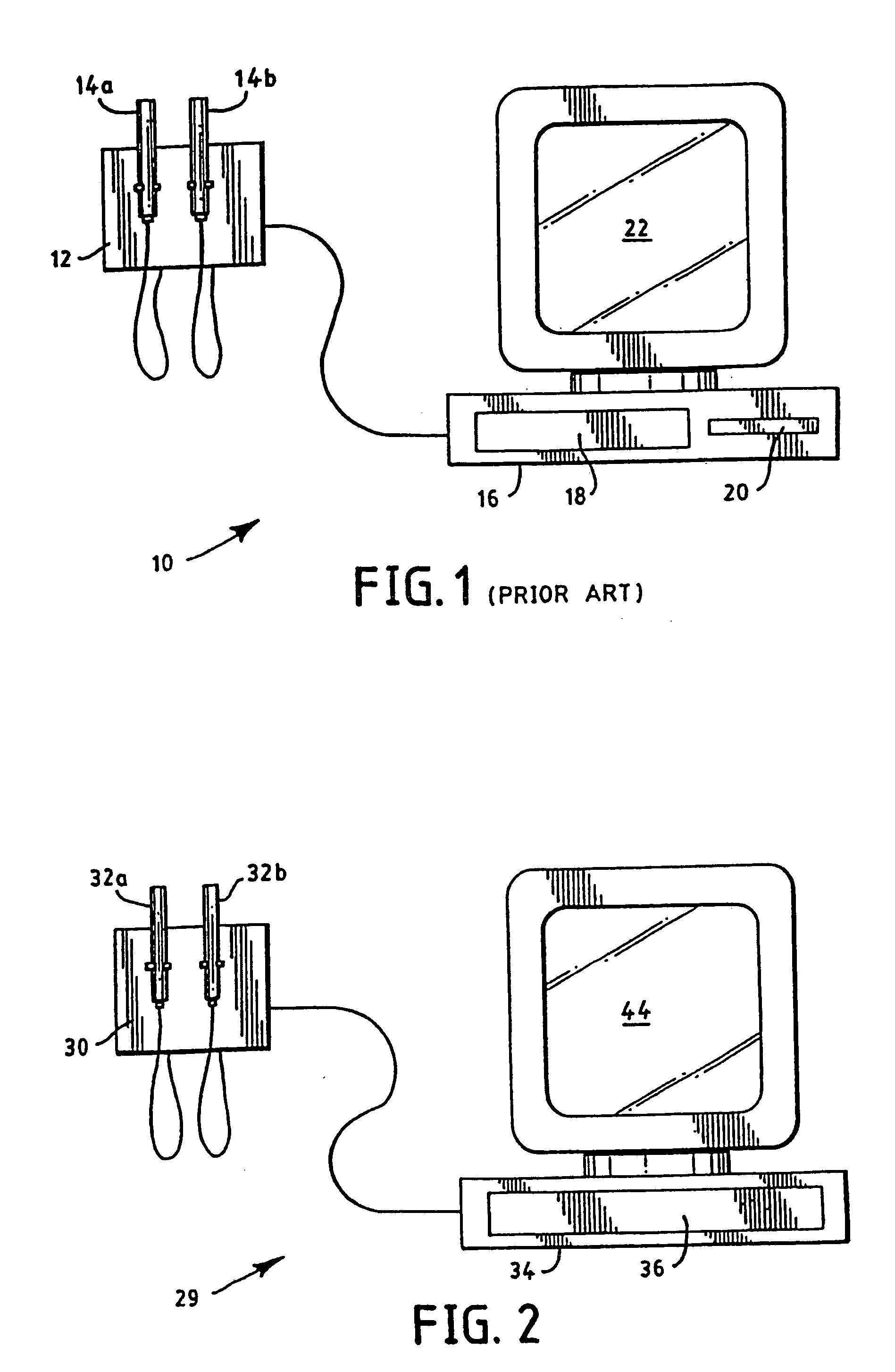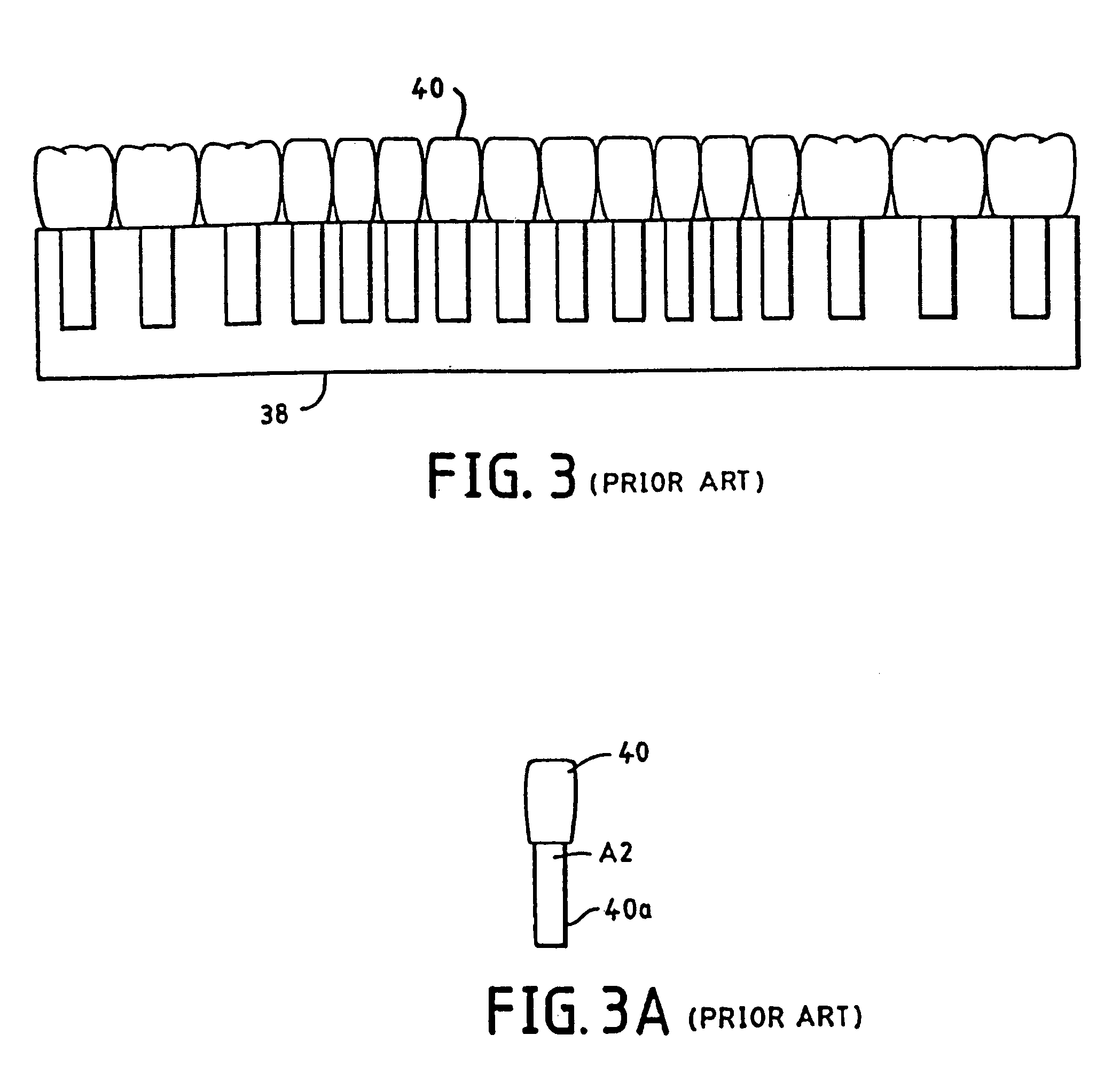Tooth shade analyzer system and methods
- Summary
- Abstract
- Description
- Claims
- Application Information
AI Technical Summary
Benefits of technology
Problems solved by technology
Method used
Image
Examples
example
[0072] The following example illustrates the use of a CCD camera to provide a dental color match for a patient's tooth. The camera was connected to a Personal Computer (“PC”). Several images of the patient's tooth were taken and compared for consistency and definition of color variance. To verify consistency, a software program was used to interface with the camera to take snapshot images of Vita Limun Vacuum Shades using the camera. The images were be stored on the PC for later analysis. All images included the sample media and color reference at the same location in the frame. A software program was written to analyze the stored snapshots. Evaluation areas (sample and reference) were sampled and results of the color analysis were presented. The color reference was used to overcome the auto-brightness which could not be disabled on the camera. The software automatically adjusted the sample results using the color reference.
[0073] The following camera was used and found to be prefe...
PUM
 Login to View More
Login to View More Abstract
Description
Claims
Application Information
 Login to View More
Login to View More - R&D
- Intellectual Property
- Life Sciences
- Materials
- Tech Scout
- Unparalleled Data Quality
- Higher Quality Content
- 60% Fewer Hallucinations
Browse by: Latest US Patents, China's latest patents, Technical Efficacy Thesaurus, Application Domain, Technology Topic, Popular Technical Reports.
© 2025 PatSnap. All rights reserved.Legal|Privacy policy|Modern Slavery Act Transparency Statement|Sitemap|About US| Contact US: help@patsnap.com



